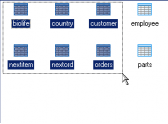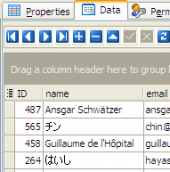SQLite Maestro online Help
| Return to chapter overview |
VACUUM
sql-statement ::= |
VACUUM [index-or-table-name] |
The VACUUM command is a SQLite extension modeled after a similar command found in PostgreSQL. If VACUUM is invoked with the name of a table or index then it is suppose to clean up the named table or index. In version 1.0 of SQLite, the VACUUM command would invoke gdbm_reorganize() to clean up the backend database file. Beginning with version 2.0 of SQLite, GDBM is no longer used for the database backend and VACUUM has become a no-op.
| Return to chapter overview |




 Download
Download Buy
Buy
